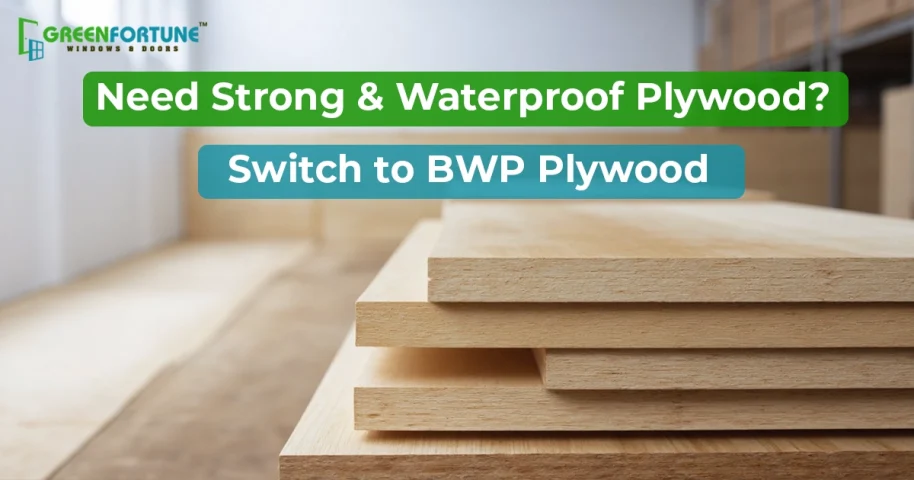
Top Types of Construction Stones for Homes and Their Unique Advantages
April 16, 2025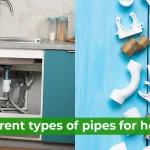
10 Types of Plumbing Pipes Every Homeowner Should Know!
April 17, 2025Choosing the right materials can make all the difference when you construct or renovate your home. Construction materials can come in various shapes, sizes, and types, so it’s all about picking the right one. Here comes Boiling water proof ply (BWP) grade. This plywood grade is known for its moisture-resistant properties, strength, and durability, providing a balance between aesthetics and functionality.
Unlike your standard plywood types that might swell or warp with time, boiling waterproof plywood can withstand boiling water. This means that BWP-grade plywood can face damp conditions, humid weather, and even accidental spills that might damage other grade wood surfaces.
What is Boiling Water Proof Plywood (BWP) Grade?
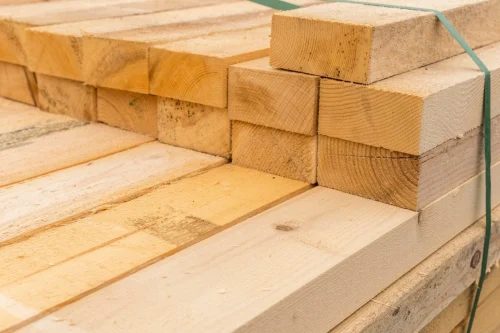
Boiling water proof plywood also known as BWP plywood is an engineered wood that can stand long exposure to water and humidity without losing its strength and durability. This plywood type is often referred to as marine grade plywood as it is designed to be applied in areas where moisture-resistant surfaces are needed. Boiling water proof ply is a suitable choice for home renovations as well as commercial use.
Also Read: What is WPC plywood? (How it is different from normal plywood)
How is Boiling Water Proof Ply Made?
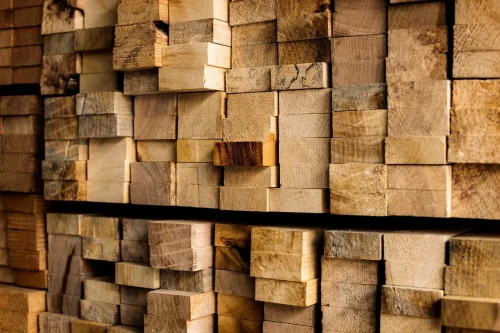
On the surface, BWP-grade plywood looks like any other wood sheet, but there’s a lot that goes into the manufacturing process to make it moisture-resistant and sturdy:
1. Choosing the Right Wood Type
The first step in the making of BWP ply is selecting the strong kind of hardwood. This makes sure that the plywood manufactured would be sturdy from the beginning.
2. Making the Layers
Next, the wood selected is sliced into thin sheets, also known as veneers. This is then dried to remove any moisture. This step is crucial in bonding the wood sheet or plywood particles together.
3. Applying Waterproofing Glue
Later on, waterproofing glue or resin called phenol formaldehyde is applied between the layers to ensure that the plywood can remain strong even under boiling water pressure.
4. Finishing
At last, the ply is tested and treated for bugs and termites to guarantee longevity. Apart from that, the wood is then trimmed and sanded to give it a ready-to-use finish.
The Benefits of BWP Plywood
Now that you know how BWP plywood is made, let’s see what kind of benefits it offers, especially in an Indian home:
1. Waterproof & Moisture-Resistant
As the term suggests, BWP plywood is boiling water proof, meaning that it can handle water without cracking, warping, or swelling. This makes this plywood grade an ideal choice for kitchens, bathrooms, and outdoor areas.
2. Strong & Durable
Because of the high-quality waterproof resin and strong layering, boiling water proof ply can last longer than other plywood types. Unlike other plywood, BWP grade can hold its shape and sturdiness over time, even when used every day.
3. Termite Resistant
During the manufacturing, the boiling water proof plywood is treated to keep termites away. This makes this plywood grade a good choice without worrying about termites or bugs damaging your furniture.
4. Good for Heavy-Duty Load
The strength of boiling waterproof plywood makes it a great choice for cupboards, cabinets, and other units that carry heavy weight or need to stay in one place for years.
5. Good for Humid Regions Too
While BWP plywood grade can be good to use in almost all regions, it can be especially good for humid regions or where temperature changes frequently. Boiling water proof ply can withstand all types of climate changes without compromising on the quality.
6. Low Maintenance
While BWP grade ply might cost a bit more than your regular plywood grade, this type of ply is low maintenance because of its durability. This makes BWP a great choice of investment in the future.
Related Read: Plywood vs Engineered Wood: Which is the Better Choice for Your Home?
How to Know If BWP Plywood is Genuine?
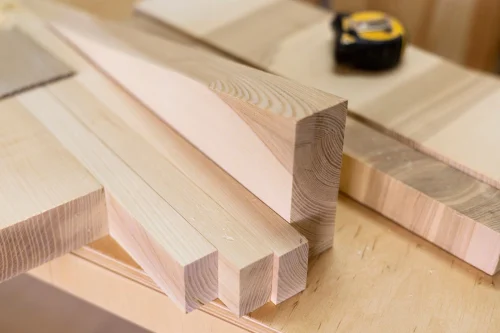
As innovations enter the market, it can be easy to confuse different types of ply. So, how can you make sure that the plywood you choose is genuine? Here are some things you need to know:
Check the Label
Look for a label or grade stamp on the plywood sheet that says “BWP” or “Boiling Water Proof Ply”. You can also make sure it says “IS 710”. This is the Indian standard for waterproof ply.
Ask for a Quality Certificate
A genuine BWP plywood brand will offer a QC (quality certification), so ask the seller or manufacturer for proof of quality.
Check for Surface and Smell
A genuine boiling waterproof plywood would have a smooth surface and because of the glue used, it might have a mild chemical smell. However, if it smells more like wood, then it might not be BWP-grade ply.
Check for Cost
BWP-grade plywood is a bit more expensive than regular or IS 303 plywood. If the cost of the boiling waterproof ply you’re purchasing is low, then rethink. While the price can be on the higher side, it’s worth the investment.
Final Words:
Choosing the right plywood for your home construction or renovation can guarantee the quality of the design and functionality. Boiling water proof ply or BWP-grade plywood can offer you the right mix of aesthetics and performance, making it an ideal choice for water-prone areas like kitchens, bathrooms, or outdoor spaces.
About GreenFortune uPVC:
At GreenFortune, we offer sustainable, stylish, and functional home improvement products. Our wide range of products and solutions ensure that your home remains secure, safe, and energy-efficient without compromising on quality. So, if you’re looking for high-end doors and windows for your home, look no further than GreenFortune.
Explore our products and home improvement solutions by clicking here.
Frequently Asked Questions (FAQs):
Q: Which type of plywood is highly resistant to moisture?
Marine-grade plywood or boiling waterproof plywood is designed to handle water pressure and humid temperatures. Marine plywood or BWP ply is made with the highest quality plywood grade with both faces being Grade A and free of defects.
Q: Which is better, HDHMR or BWP plywood?
Each HDHMR and BWP plywood have their benefits and drawbacks but they are not interchangeable. HDHMR is ideal for high moisture areas where durability matters more, whereas BWP is ideal where direct water exposure is possible.
Q: How to identify BWP plywood?
To identify BWP plywood, you can look for the IS 710 mark on the plywood sheet or check the details of the manufacturer by tracking the 7-digit CML (Conformity Marking and Labelling) number.








